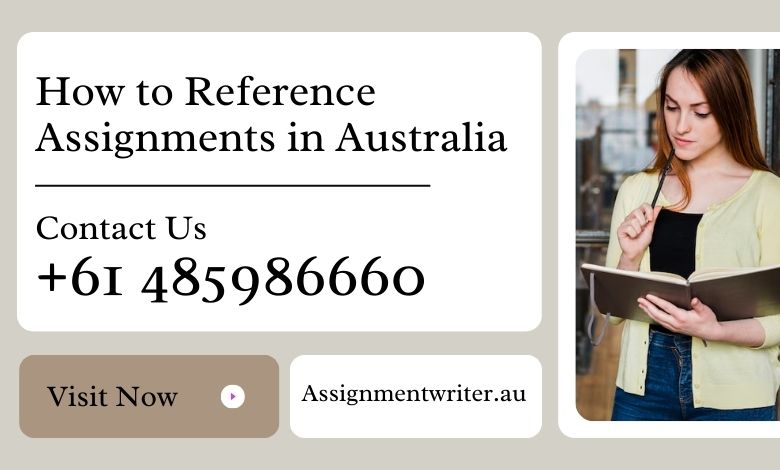
In Australia, referencing really is more than a formality. It’s an integral part of any academic endeavor that underpins integrity of the academic exercise, allows readers access to the verification of sources, and discloses the width of your research. Whether your campus is a Group of Eight university or a country site, by learning these principal styles of referencing-APA, Harvard, MLA, Vancouver, and Chicago-you will be well prepared for the wonderful world ahead. This guide will lead you through the most fundamental principles, examples, and tips of each kind so your assignment help conform to Australian university standards.
1. Why Accurate Referencing Matters in Australia
- Academic Integrity: Australian universities take plagiarism very seriously. Correct referencing demonstrates honesty by acknowledging the intellectual property of others.
- Traceability: It allows lecturers and peers to trace your research path, verify claims, and explore further reading.
- Professionalism: Different disciplines favour different styles. Engineering and health sciences often use Vancouver or IEEE, while humanities lean toward MLA or Chicago. Understanding which style suits your course shows academic maturity.
- Consistency: A consistent style throughout your work makes it easier to read and assess, which can positively influence your grades.
2. Understanding Common Referencing Styles in Australia
Australian institutions typically accept several major styles. Always check your course handbook or unit outline—some universities specify slight local adaptations (e.g., University of Sydney’s variation on Harvard). Below is an overview:
|
Style |
Common in… |
Key Feature |
|
APA |
Social sciences, psychology |
Author–date in-text citations |
|
Harvard |
Business, humanities |
Author–date, varied publisher formats |
|
MLA |
Literature, arts |
Page-based in-text citations |
|
Vancouver |
Medicine, health sciences |
Numbered references in order of appearance |
|
Chicago |
History, some humanities |
Options for author–date or footnote styles |
3. APA Style (7th Edition)
In-text citation: (Author Surname, Year)
- One author: (Smith, 2021)
- Two authors: (Jones & Lee, 2019)
- Three or more: (Taylor et al., 2020)
Reference list entry:
- Book: Smith, A. B. (2021). Title of the book (2nd ed.). Publisher.
- Journal article: Jones, C. D., & Lee, E. F. (2019). Title of article. Journal Name, 12(3), 45–59. https://doi.org/xx.xxx/yyyy
Australian tip: Use Australian English spelling (e.g., “organisation” not “organization”) and local publisher details when referencing editions published in Australia.
4. Harvard Style
Harvard referencing is actually a family of author–date styles, and Australian universities may have their own variants (e.g., UTS Harvard, AGPS). Always download your university’s “Harvard Style Guide.”
In-text citation: (Author Surname Year, p. page number)
- Example: (Brown 2018, p. 22)
Reference list entry:
- Book: Brown, P. 2018, Understanding Nursing, 3rd edn, Health Press, Sydney.
- Journal article: Green, R & Patel, S 2020, ‘Community health initiatives’, Australian Journal of Public Health, vol. 25, no. 4, pp. 123–37.
5. MLA Style (9th Edition)
MLA is less common in Australia but still used in some humanities courses.
In-text citation: (Author Surname page number)
- Example: (White 78)
Works Cited entry:
- Book: White, John. Exploring Australian Literature. Penguin, 2017.
- Journal article: Black, Sarah. “Indigenous Voices in Modern Poetry.” Literary Studies, vol. 15, no. 2, 2019, pp. 210–28.
6. Vancouver Style
Preferred in medical and health sciences, Vancouver uses sequential numbers:
In-text citation: [1], [2–4]
- Place numbers corresponding to your reference list entries.
Reference list entry:
- Thompson J, Nguyen A. Clinical nursing practice. 4th ed. Melbourne: HealthCare Publications; 2021.
- Lee Y, Roberts K. Outcomes of community-based aged care. Aust J Community Health. 2020;18(2):34–42.
7. Chicago Style
Chicago offers two systems:
- Notes and bibliography: Footnotes or endnotes + bibliography (common in history).
- Author–date: Similar to Harvard but with Chicago’s unique conventions.
Footnote example:
- Rachel Brown, Colonial Australia (Sydney: Academic Press, 2015), 45.
Bibliography entry:
Brown, Rachel. Colonial Australia. Sydney: Academic Press, 2015.
8. Key Steps for Referencing Your Assignment
- Identify Your Style: Check your assignment guidelines or university style guide.
- Collect Full Publication Details: Author(s), year, title, edition, publisher, place of publication, journal name, volume, issue, page range, DOI/URL.
- Use In-Text Citations Correctly: Match every in-text citation to a full entry in your reference list.
- Format Consistently: Pay attention to punctuation, italics, and capitalization.
- Alphabetize Your Reference List: By author surname (or number order for Vancouver).
- Proofread Carefully: Referencing errors can detract from the quality of your work.
9. Tools to Help You Reference
- Reference management software: EndNote, Zotero, Mendeley. These integrate with Word and can format your references automatically in your chosen style.
- University libraries: Most Australian universities provide online referencing guides and templates (e.g., Monash, UNSW).
- Online generators: Tools like Cite This For Me or Scribbr—but always double-check generated entries against your style guide.
10. Common Pitfalls and How to Avoid Them
- Missing page numbers: Especially in direct quotes—always include a page reference if required by your style.
- Incorrect author order: For sources with three or more authors, check whether your style uses “et al.” or lists all names.
- Inconsistent formatting: Make sure every entry follows the same pattern—don’t mix APA and Harvard conventions.
- Outdated editions: Always use the latest edition of style manuals and ensure you reference the edition of a book you actually consulted.
At first, correct citation may seem impossible, but it really is simple due to endless practice and tools. After mastery of referencing styles like APA, Harvard, MLA, Vancouver or Chicago by knowing their Australian nuances-the worst thing that could be they make a work fail to attract plagiarism, but they will truly enhance the credibility and professionalism of your academic work. So, embrace these guidelines with your university style guidelines and polish your assignments to give them the shine they deserve-good luck!